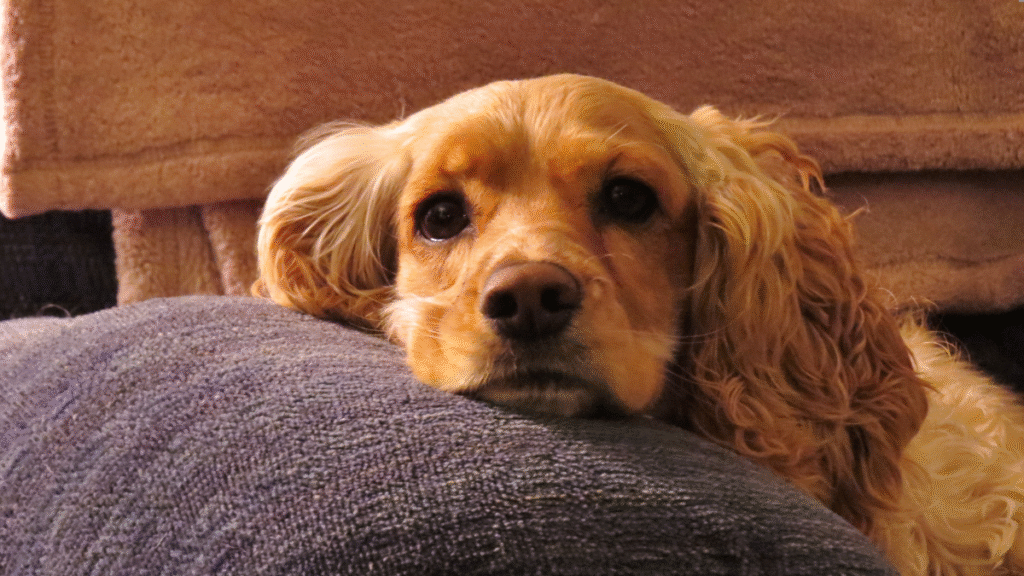Separation anxiety is one of the most common behavioral problems in dogs. Shredded furniture, scratch marks on the door, and endless barking when you leave may not be the start to your day that you imagined. It’s no fun for you—or for your anxious dog, either.
Here’s the good news: you can prevent dog separation anxiety before it even starts.
This comprehensive guide will explain the causes of separation anxiety, the early warning signs to watch for, and, most importantly, how to stop it before it begins.

What Is Separation Anxiety in Dogs?
Separation anxiety is a state of panic or extreme distress that your dog experiences when left alone or separated from you. Dogs are social animals that form close bonds with their human pack members. While it’s normal for dogs to dislike being alone, separation anxiety is much more serious than simple separation discomfort.
Common signs of separation anxiety include:
-
Excessive barking, whining, or howling when left alone
-
Destructive chewing or scratching at doors and windows
-
House soiling despite being house-trained
-
Pacing, panting, or drooling excessively
-
Attempting to escape or follow you out the door
-
Jumping up on you or becoming overly excited when you return
Separation anxiety in dogs is an intense emotional and physical reaction to being left alone. Dogs suffering from it are not being “naughty” or “disobedient”—they are genuinely in panic mode. If they understood that you were coming back and not abandoning them, they wouldn’t react this way.
Keep in mind that occasional boredom or minor misbehavior isn’t the same as true separation anxiety. Panic and an uncontrollable need to be near you are the key signs of genuine anxiety.
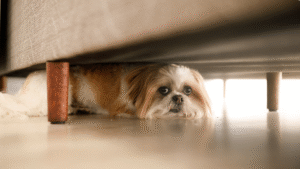
What Causes Separation Anxiety in Dogs?
The causes of separation anxiety can be both environmental and related to a dog’s temperament or past experiences. The most common triggers include:
1. Sudden Change in Schedule
Dogs thrive on predictable routines. If you’ve been home all day and suddenly return to work or change your schedule drastically, it can cause confusion and stress.
2. Over-Attachment or Lack of Independence Training
Some dogs never learn to be by themselves and remain glued to their owners constantly. Without independence training, they become overly dependent and anxious when alone.
3. Traumatic Events or Experiences
Rescue dogs or those who have been rehomed multiple times are especially prone to separation anxiety. For them, being left alone often equals abandonment, which triggers fear and panic.
4. Lack of Exercise or Mental Stimulation
Under-stimulated dogs often have excess energy, which can manifest as restlessness and anxiety when left alone.
5. Inconsistency with Departures and Returns
If you make a big fuss about leaving or coming home, your dog learns to associate those moments with intense emotions, which heightens their anxiety.
Preventing separation anxiety before it starts means addressing these factors early and consistently.
How to Prevent Dog Separation Anxiety Before It Starts
Prevention is the most effective way to stop separation anxiety. Teaching your dog—whether a puppy or new rescue—that being alone is safe and normal will build confidence and emotional resilience.
1. Start Independence Training from Day One
Begin teaching your dog from the moment they come home that being alone is normal and nothing to fear.
-
Leave your dog in a safe room or crate for short periods (just a few minutes at first), then return calmly.
-
Stay neutral when leaving and returning—avoid dramatic goodbyes or overexcited greetings.
-
Gradually increase the duration of your absences over time.
This gentle, repeated exposure to short separations helps your dog understand that being alone is a normal part of life.
2. Set Up a Safe, Comfortable Space
Create a designated area where your dog feels relaxed and secure when you’re not home. This could be a crate, bed, or a gated-off section of a quiet room.
-
Place their favorite toys, chews, or treats in the area to build positive associations.
-
Leave behind an old T-shirt or blanket that smells like you for comfort.
-
Play soft music or leave the TV on low to help mask outside noises.
When your dog has a comforting space that feels safe, they are less likely to panic when you leave.
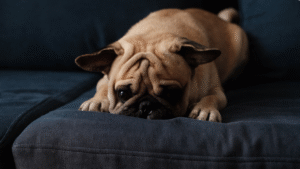
3. Create a Consistent Daily Routine
Dogs love predictability. A regular schedule for feeding, walks, and playtime helps them feel secure and reduces anxiety.
If your schedule is about to change—such as returning to work—start the transition gradually. Practice leaving your dog alone for short periods leading up to the change to help them adjust smoothly.
4. Provide Daily Exercise and Mental Stimulation
A tired dog is a happy dog. Physical and mental activity are essential to reducing anxiety.
-
Take your dog for a walk, run, or play fetch before you leave.
-
Offer interactive puzzle toys or treat dispensers to keep their mind busy.
-
Try enrichment games like hide-and-seek, snuffle mats, or frozen Kongs filled with peanut butter or kibble.
Keeping your dog physically and mentally engaged reduces excess energy that can otherwise turn into anxiety.
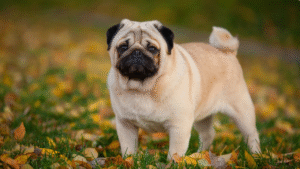
5. Don’t Reinforce Clingy, Attention-Seeking Behavior
Constantly petting or comforting your dog when they demand attention reinforces dependency. Instead, teach your dog to be calm on their own.
-
If your dog whines or paws for attention, ignore them until they settle, then reward calm behavior.
-
Teach a “settle” command and reward your dog for lying quietly on their bed or mat.
-
Occasionally let your dog rest in another room while you stay elsewhere to promote independence.
Learning to relax without constant reassurance helps your dog feel more secure when you’re away.
6. Keep Departures and Returns Low-Key
Your energy sets the tone for your dog’s emotional response.
-
Leave quietly without long goodbyes or emotional farewells.
-
When you return home, wait until your dog is calm before greeting them.
This teaches your dog that your comings and goings are no big deal, which minimizes anxiety over time.
7. Reward Calm Behavior with Positive Reinforcement
Always reward calm, relaxed behavior.
-
Praise or treat your dog when they remain calm as you prepare to leave.
-
Avoid punishment for anxious or destructive behavior—yelling or scolding only increases fear and makes anxiety worse.
Positive reinforcement builds trust and helps your dog associate alone time with good things.
8. Practice Regular Short Absences
Even if you’re home most of the time, make sure your dog gets used to short periods alone.
-
Step outside for a few minutes.
-
Run a quick errand or take out the trash.
-
Gradually increase the time you’re away.
Practicing regular absences helps normalize being alone and prevents anxiety from developing.
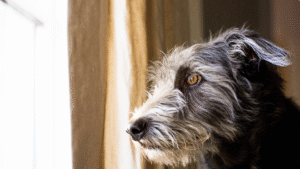
9. Try Calming Aids and Tools (Optional)
Some dogs benefit from calming products, especially during training. Options include:
-
Dog-appeasing pheromone diffusers (such as Adaptil)
-
Weighted or snug-fitting anxiety wraps
-
Natural calming supplements (consult your vet first)
-
Interactive cameras that let you see and talk to your dog remotely
These tools can help support your training efforts but should be used alongside behavioral strategies, not as a replacement.
10. Seek Professional Help If Needed
If your dog continues to panic despite consistent training, it may be time to seek professional help. Signs that expert guidance is needed include:
-
Extreme anxiety when left alone (destructive chewing, self-injury, nonstop barking)
-
House soiling that only occurs when you’re away
-
Refusal to eat or drink when left alone
A qualified dog trainer, veterinary behaviorist, or veterinarian can help develop a customized desensitization plan and rule out any medical causes of anxiety.
Final Thoughts
Separation anxiety in dogs is serious—but it’s also preventable. If you teach your dog early on that it’s normal and safe to be alone, they’ll develop the confidence to handle your absence calmly.
The key is consistency, patience, and calm leadership. When your dog feels secure and trusts that you always return, they’ll be able to relax—even when you’re not there.
- 5 Cheap Alternatives To Dog Training Equipment - November 12, 2025
- Homemade Calming Spray To Help Dogs During Training - November 12, 2025
- 7 DIY Dog Training Tools You Can Make From Household Items - November 12, 2025
